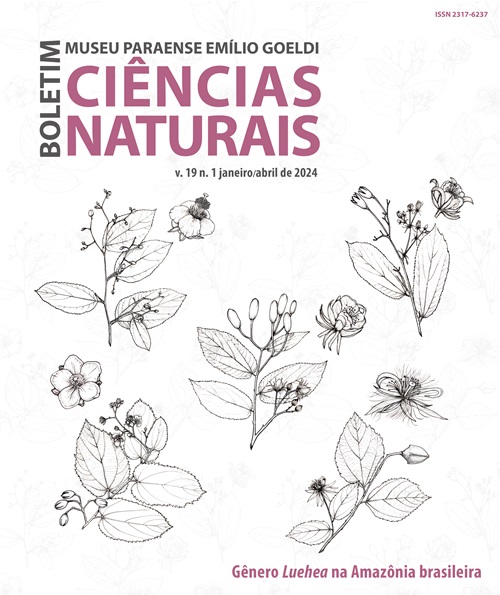Diet of the Brazilian Tanager Ramphocelus bresilia (Linnaeus, 1766) in Guapi-Mirim Environmental Protection Area, state of Rio de Janeiro, Brazil
DOI:
https://doi.org/10.46357/bcnaturais.v19i1.948Keywords:
Food ecology, Frugivory, Mangrove, ThraupidaeAbstract
The Brazilian Tanager, Ramphocelus bresilia (Linnaeus, 1766), is an endemic bird of the Brazilian Atlantic Forest with a distribution restricted to eastern Brazil. Between 2010 and 2015, its diet was studied in the Guapi-Mirim Environmental Protection Area, being the most important mangrove remaining in Guanabara Bay, Rio de Janeiro. The birds were captured with mist nets and their feces were collected and stored in flasks with 70% alcohol, resulting in 51 samples from 40 individuals. In 62.7% of the samples there were plant and animal items, in 21.6% only plant items, and in 13.7% only animal items. In 2% of the samples there was no identifiable material. Seeds of three species were identified: Schinus terebinthifolius Raddi (n = 9), Tapirira guianensis Aubl. (n = 2) and Tilesia baccata (L.) Pruski (n = 1); only the genus was identified of six other seeds, the most frequent being Miconia Ruiz & Pav. (n = 10) e Alchornea Sw. (n = 6). Among the animal items, arthropods were found, mainly insects of the orders Coleoptera (n = 24), Hymenoptera (n = 10), and Odonata (n = 7). A possibly new record was the presence, in a sample, of a vertebra and two bone fragments from a nestling, a probable opportunistic predation.
Downloads
Published
Issue
Section
License
Publication means fully assigning and transferring all copyrights of the manuscript to the journal. The Liability Statement and
Assignment of Copyrights will be enclosed with the notice of acceptance. All the authors must sign the document and return it to the journal.








